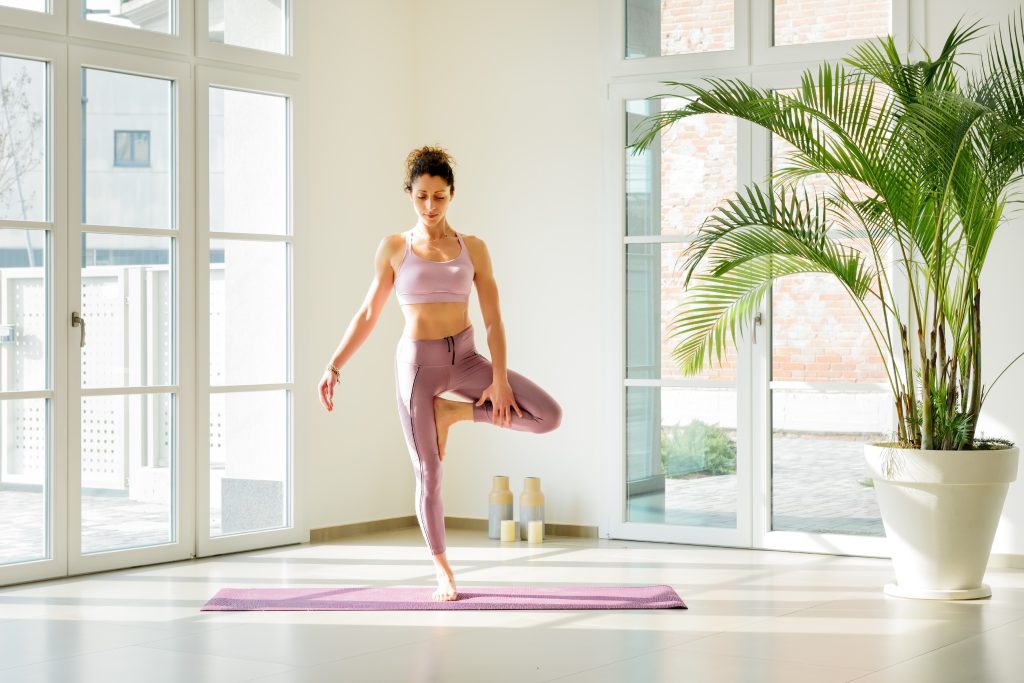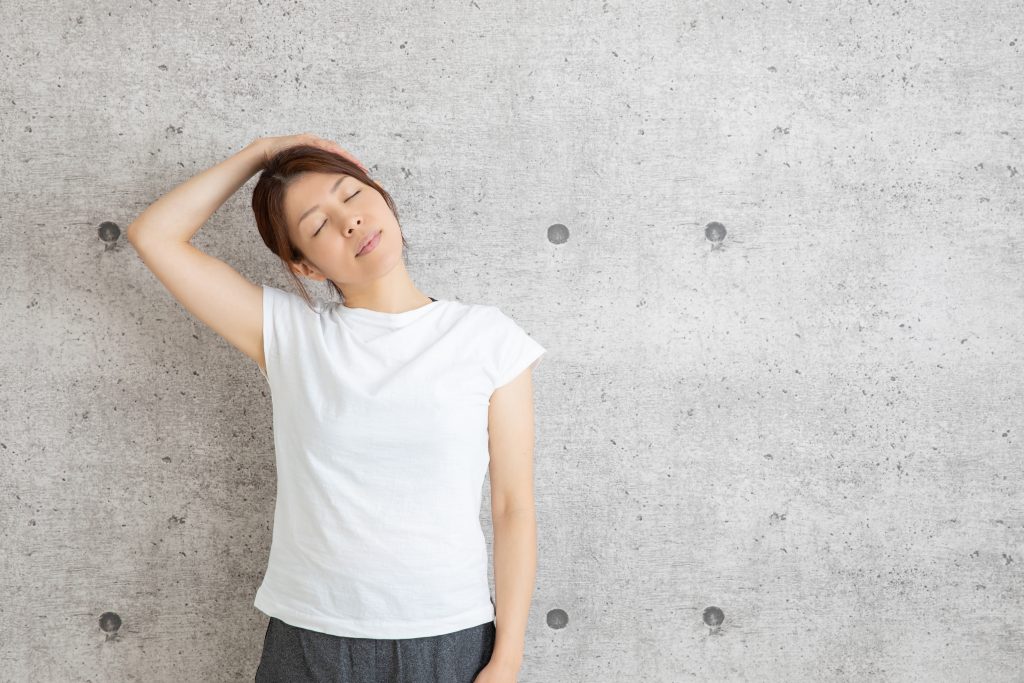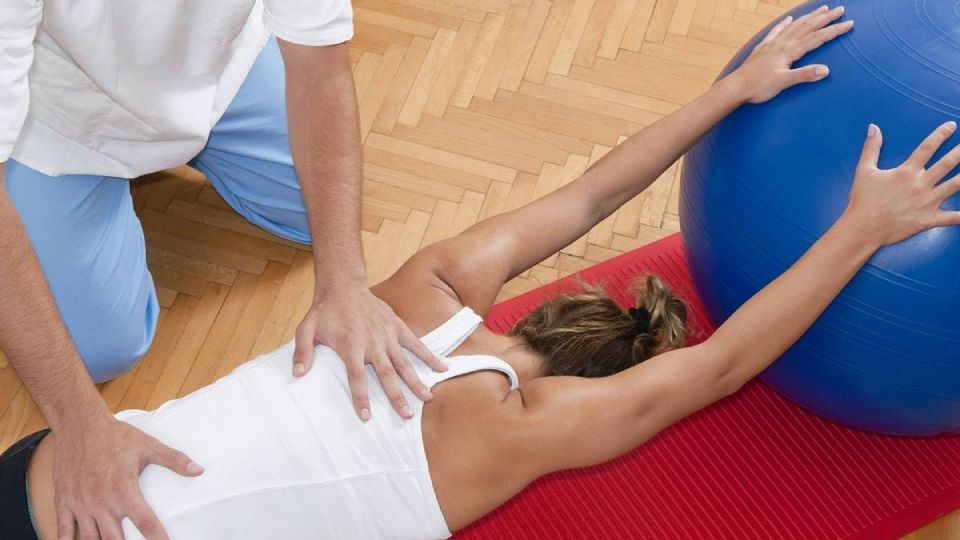Osteochondrosis is a degenerative disease of the intervertebral discs, small joints, and bones of the musculoskeletal system, characterized by pain in the back and neck. Many patients also complain of muscle stiffness, weakness, malaise, headaches, dizziness, and pain in the legs and heart area.
This is caused by an uneven load on the spine. Examples: carrying heavy bags on one shoulder, sitting in an uncomfortable position, or sleeping on an uncomfortable mattress. Other factors include heavy sedentary or physical work, flat feet, poorly fitting shoes, excess weight, injuries, stress, poor metabolism, genetic predisposition, improper nutrition, pregnancy, and so on.
As this disease is common and its relevance is clearly growing, organizing physical rehabilitation for spinal osteochondrosis and treatment is a top priority. Spinal syndromes, representing static and dynamic dysfunction of the spine, motor disorders of varying severity from mild paralysis of individual muscle groups to severe paralysis of the lower body, as well as pelvic organ dysfunction determine the severity and loss of work capacity. This situation shows that the treatment and rehabilitation of this category of patients are closely related.
At the initial stages of exacerbation, non-steroidal anti-inflammatory drugs, muscle relaxants, anti-inflammatory drugs, analgesics, and pain blockers are prescribed.
Starting from the exacerbation phase, the selection choice of various measures is based on etiology, age, area of occurrence, duration, concomitant diseases, and individual tolerance to physical load. In the exacerbation phase, it is necessary to reduce the physical load, for example, by following observing the exercise regime (bed rest) and lying on a semi-rigid bed. Physiotherapy and classical acupuncture are used to relieve pain.
Rehabilitation is not only a comprehensive restoration of the functional activity of the spine but also the prevention of the progression of destructive-degenerative processes to healthy bone and cartilage soft tissues. Diseases at stage 2 and 3 cannot be completely cured. Rehabilitation can restore or compensate for the reduced function as much as possible.
A referral to a rehabilitation therapist is given immediately after treatment to prevent loss of function and maintain mobility and freedom of movement. The doctor will develop an action plan that depends on a patient’s physical condition, the severity of the osteochondral disease, and the number of complications that have arisen.
Diagnosis of osteochondrosis
Specialists use various methods to diagnose osteomalacia to accurately determine the classification and stage of the disease, and prescribe appropriate and effective treatment.
For diagnosis, we use the following methods:
- Survey – to determine the cause of osteochondrosis.
- Examination – to check the flexibility of the spine and the presence of pain during movement.
- Radioscopy: for precise identification of the affected area in the spine.
- CT or MRI: reveals the stage of the disease.
After the examination, the doctor reviews looks at the patient’s physical characteristics and selects the most effective treatment depending on the stage of the disease for the rehabilitation of patients with spinal osteochondrosis.
Video: “Spinal Osteochondrosis Rehabilitation. Lumber Spine.”
Lumber Spine: Set No1 General rehabilitation and support. Initial stage.
For additional information about spinal osteochondrosis rehabilitation you can watch a video demonstrating exercises and rehabilitation recommendations.
Spinal Osteochondrosis Rehabilitation Methods
There are four classifications of osteochondrosis, depending on the localization of the disease: cervical, lumbar, thoracic, and mixed (LINKS). The lumbar-sacral osteochondrosis rehabilitation program depends on the type of disease, stage, overall condition, age, weight, and health of a patient. The following techniques are usually used:
- Medical massage. Medical massage is used to relieve muscle spasms, strengthen muscles, and restore spinal mobility. 10-20 procedures improve blood supply to the affected area, exposing to the recovery rate and mobility of tissues and internal organs that have not received the necessary nutrients due to insufficient blood supply. After treatment, inflammation and swelling subside, and the patient’s overall condition improves. During treatment, care should be taken to ensure that the patient feels comfortable. Any pain should be reported to the doctor immediately.
- Therapeutic physical culture. The main goal of this technique is to strengthen the back muscles supporting the spine; therapeutic exercise is not a procedure to be done occasionally. Patients should perform simple exercises throughout their lives, which can help prevent the development of many diseases. During inpatient treatment, an instructor monitors a patient. The instructor selects exercises, monitors the technique, and controls breathing. The instructor can increase the complexity of the exercises and the number of repetitions as progress is achieved. After hospitalization, the patient continues to perform the exercises at home.
- Spinal traction. This technique helps the vertebrae return to their natural position, effectively relieving muscle spasms. Only a specialist can determine the optimal force for traction, so treatment should be carried out under the supervision of a doctor.
- Physical therapy. The doctor applies pressure to the affected areas of the spine using various instruments. Healthy neighboring areas are not affected. These methods stimulate tissue regeneration, normalize blood circulation, accelerate metabolism, relieve pain, alleviate spasms, reduce nerve compression, and in general strengthen the immune system. The most common methods include electrotherapy, magnetotherapy, ultrasound therapy, acupuncture, and vibration therapy.
Medications relieve pain, reduce inflammation, improve microcirculation of blood, and perform other tasks. Depending on the stage of osteochondrosis, the doctor may prescribe injections, ointments, tablets, or drops as part of rehabilitation for patients with spinal osteochondrosis.
Recovery is a complex of measures tailored by a specialist for each patient. Only one method or self-treatment will not produce the desired result. Treatment should be carried out for approximately every six months. The exact interval depends on a patient’s health status. This is the only way to improve health and prevent complications and relapses.

Therapeutic exercise (physical therapy)
Rehabilitation with through controlled physical activity is one of the most popular non-drug methods of treatment for physical rehabilitation of spinal osteochondrosis. Gentle exercises, such as those for improving flexibility and strengthening the muscle corset, help develop a habit of proper body posture during physical exercise and static positions poses. You can review exercises at https://ghrs-group.ru/rehab/illness/reabilitatsiya/ortopediya/poyasnichnyj-otdel-pozvonochnika.
Massage
Massage is also used during rehabilitation to relieve spasms, relax and strengthen the muscle corset. To stabilize a patient’s spine, he is placed in a position lying on a hard and stable surface, and his abdomen is placed on a pillow.
Traction
Each of the three traction methods – gravitational traction, impulse traction, and exercise on traction chair – helps patients relieve back pain and tension. Osteochondral physical rehabilitation for cervical spinal osteochondrosis can be carried out under the supervision of qualified medical personnel, which can help reduce spasms and back pain.
Home rehabilitation
Self-rehabilitation is suitable for patients with grade 1 osteochondrosis. At this stage, discomfort in the neck, chest, and back is felt only after physical exertion. Usually, there is no need for medication, except for tissue regeneration stimulators. Home rehabilitation does not exclude the possibility of patients undergoing massage, magnetotherapy, or laser therapy in a physiotherapy center.
Treatment of cervical osteochondrosis
The rehabilitation program for spinal osteochondrosis is individually tailored to each patient. The program is monitored by a rehabilitation therapist during subsequent check-ups.
The program includes the following rehabilitation measures:
- A set of therapeutic exercises to consolidate the treatment effect and prevent osteochondrosis
- Supportive therapy.
- Autogenic training methods aimed at improving the condition of the entire spine.
- Participation in group physical exercise courses.
All recommended measures will not have evident results if the patient continues their previous lifestyle. Therefore, in many cases, osteochondrosis progresses.

Body position control in osteochondrosis
In osteochondrosis, it is very important to constantly pay attention to your posture. The correct position of the spine during sleep, standing, sitting, and walking will definitely reduce the pain in the affected area.
Position while lying down
Do not lie on your back in bed. Try to sleep on your side or stomach. The position with knees pulled up to the chest (fetal position) is very relaxing. If you sleep on your side, place a pillow under your stomach for comfort. You should also change positions more frequently. Avoid sudden up-and-down movements from the bed, as this can cause a strong shaking of the spine.
Sitting position
When sitting on a chair, always keep your back straight. To do this, sit not on the edge of the chair, but on the entire level of your hips and buttocks, leaning against the backrest. You should not sit still; every 15 minutes, you need to change the position of your arms, elbows, and overall posture. If you have to sit for a long time, always stand up and do light exercises every hour.
Performing household tasks
When performing various household tasks, you should be also careful not to make sudden movements, not to bend, squat, or overexert yourself. For example, if you need to iron, it is better to sit down. If you need to pick something up from the floor, it is better to lean against rely on something with one hand. Avoid standing in one place for a long time.
Rehabilitation for acute back pain
During the acute phase, treatment is usually not performed. However, in cases of acute exacerbation of osteochondrosis, rehabilitation therapy is possible. The main method is physiotherapy, as gentle movement of the affected area stimulates cells and relaxes muscles, thereby improving a patient’s condition. The patient should be under the supervision of a specialist, and exercises should be performed lying down or sitting, without excessive effort.
In addition, it is recommended to exclude fatty, fried, salty, and smoked foods from the diet in favor of vegetables, fruits, and liquid food. Of course, medications prescribed by the treating physician can help relieve back pain. Self-medication, especially with strong painkillers not informing your doctor, should be avoided. Such drugs are harmful not only to the back but also to other parts of the body.

Prognosis of the disease
As cervical osteochondrosis progresses, it can limit physical activity for a long time and cause serious neurological damage. However, with comprehensive treatment and an appropriate rehabilitation program, the prognosis is favorable.
Cervical osteochondrosis is best corrected in its early stages. As it progresses, it can lead to compression of spinal nerve roots and the spinal cord. Symptoms of this serious complication include loss of mobility and sensation in the hands, and in the most severe cases, complete paralysis (quadriplegia). Neurosurgical intervention is often required to prevent these consequences. Therefore, medical care should be sought as soon as possible. Even mild periodic neck pain is a reason to seek medical care.
Rehabilitation period
The time required for rehabilitation depends on the degree of joint damage, age, constitution, and lifestyle of a patient. And, of course, the recovery time depends on the type of treatment recommended by the doctor (conservative or surgical). In the case of conservative treatment, the active phase of rehabilitation lasts from one to three months. In the case of surgical treatment, it lasts from 3 to 6 months.
conclusion
Check out the demo version of our sets of exercises for Cervical spine, Thoracic spine Lumbar spine on YouTube.
You can find more information about Cervical spine, Thoracic spine, Lumbar spine in our Library of Articles.
Our website presents sets of exercises for the cervical spine, thoracic spine, lumbar spine in the following areas:
-
SET OF EXERCISES №1 FOR THE CERVICAL SPINE. INITIAL STAGE OF RECOVERY
-
SET OF EXERCISES №2 FOR THE CERVICAL SPINE. MID STAGE OF RECOVERY
-
SET OF EXERCISES №3 FOR THE CERVICAL SPINE. ADVANCED STAGE OF REHAB
-
SET OF EXERCISES №1 FOR THE THORACIC SPINE. IMPROVING THE DYNAMICS AND MOBILITY OF THE THORACIC SPINE
-
SET OF EXERCISES №2 FOR THE THORACIC SPINE. STRENGTHENING THE STABILIZING MUSCLES OF THE THORACIC SPINE AND SHOULDER GIRDLE
-
LUMBAR SPINE: SET №1 GENERAL REHABILITATION AND SUPPORT. INITIAL STAGE
-
LUMBAR SPINE: SET №2 GENERAL REHABILITATION AND SUPPORT. MID STAGE
-
LUMBAR SPINE: SET №3 GENERAL REHABILITATION AND SUPPORT. ADVANCED STAGE
-
LUMBAR SPINE: SET №4 TREATMENT OF HERNIATED DISCS
-
LUMBAR SPINE: SET №5 LUMBAR INSTABILITY REHABILITATION. THE EXERCISE SYSTEM IS AN ALTERNATIVE TO SURGERY



